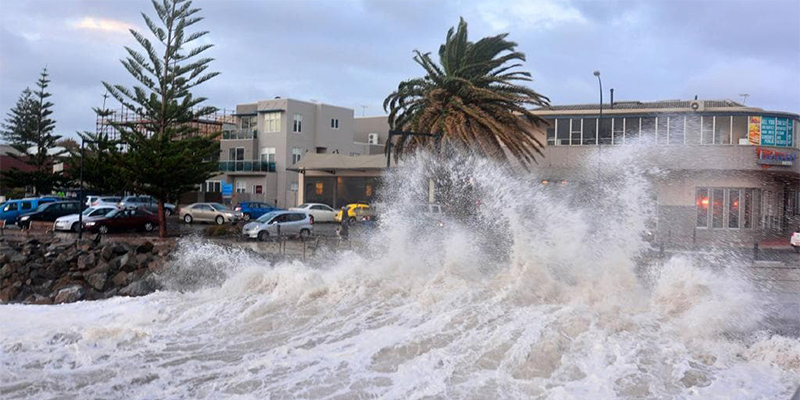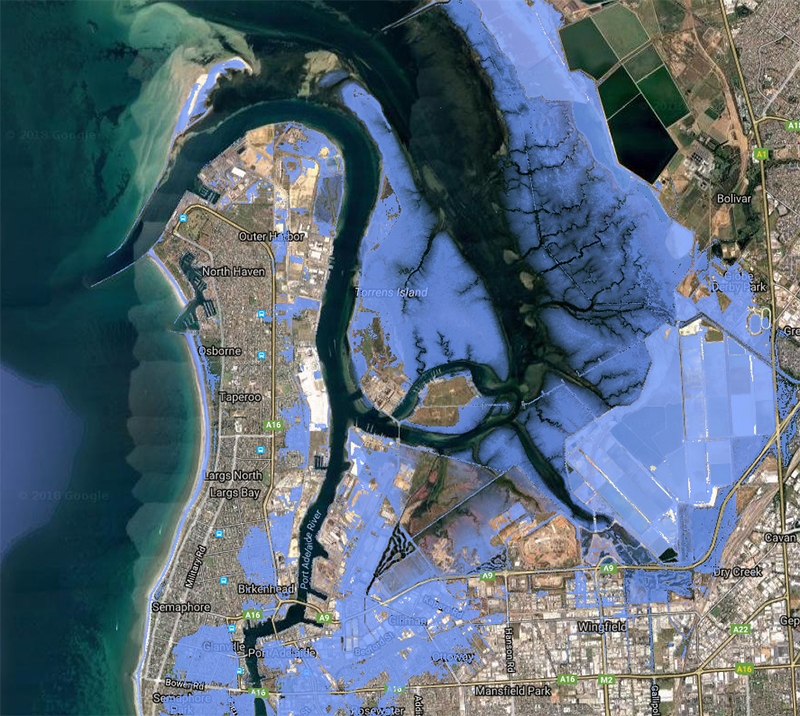Stormy waters ahead for coastal towns: what are the options?
By Candy Gibson
 ENVIRONMENT AND SUSTAINABILITY Storm surges like this one on Adelaide’s coastline are predicted to become more frequent, resulting in flash flooding. Photo by Jason Hywood, Chillography.
ENVIRONMENT AND SUSTAINABILITY Storm surges like this one on Adelaide’s coastline are predicted to become more frequent, resulting in flash flooding. Photo by Jason Hywood, Chillography.Australians love property and living near water. But fast forward 30 years and the two may be incompatible, judging by global forecasts warning of sea level rises that could threaten thousands of coastal residents in decades to come.
New UniSA research analyses the storm surge risks to Port Adelaide – one of Adelaide’s most flood-prone regions – and considers how authorities might prepare for such a scenario between now and 2100.
A 2005 council study mapped the impact of a once-in-a-century flood in Port Adelaide, estimating the cost of a clean up to be in the region of $30 million if a major flood hit, and rise to more than $70 million by 2050 if nothing was done and sea levels rose by 0.3 metres.
The likelihood of this happening over the next 80 years is growing, based on sea level rise projections and forecasts predicting more intense weather in Australia, resulting in severe storm surges which can inflict considerable damage.
 Port Adelaide flood map: The blue represents the areas prone to flooding in the year 2100, based on current high tide levels plus 74cm of sea level rise.
Port Adelaide flood map: The blue represents the areas prone to flooding in the year 2100, based on current high tide levels plus 74cm of sea level rise.UniSA PhD candidate John Watson is exploring a legal framework for relocating people from urban areas prone to frequent storm-surge flooding. He has adopted Port Adelaide as a case study.
Watson, from UniSA’s School of Law, says there are three policy options available to adapt flood-prone regions: protection (building structures such as seawalls); accommodation (improving drainage, or constructing houses on stilts); or managed retreat (permanent relocation to higher land).
The third option is worth considering, despite being the most unpalatable and under-researched solution, he argues in his soon-to-be completed thesis.
“It may be preferable for governments at some point in the future to acquire properties at risk of frequent flooding and convert them to a public use, such as open space or a flood buffer,” he says.
However, Watson says there are significant political, economic and social ramifications in adopting a policy of managed retreat.
“The idea of governments enforcing a retreat from natural hazards goes against the grain of the great Australian dream – owning your own home, particularly near the sea – so it tends to be an unpopular strategy.
“One of the interesting questions is, if managed retreat is implemented at Port Adelaide, when would be the right time to relocate? Do it too early and there is the cost of sacrificing usable land. Do it too late and people and communities will suffer.
“Also, who should pay? Given the cost of such a policy, and the likelihood that other places will also suffer frequent floods in time, should the Commonwealth tax those who choose to live in flood-prone areas, or businesses that emit greenhouse gases that contribute to sea level rise and the risk of floods? Should it contemplate a climate adaptation future fund, for example? These are questions that need to be considered.”
He cites examples in the US where in the wake of Hurricane Sandy, residents in New York’s Staten Island whose homes were flooded asked the government to buy them out.
“There will be communities who will accept the idea of land acquisition because they have been frequently inundated,” Watson says.
“Others will resist because they have a strong attachment to their property and believe the government’s job is to protect the community and not to intervene in private matters.”
When completed, Watson hopes to extrapolate his managed retreat framework for Port Adelaide to other urban flood-prone areas in Australia.
Other Stories
- UniSA marine scientist lands a big catch for fishing industry
- Could share housing be the answer for people as they age?
- Olympian and inspirational survivor awarded
- Ho ho hold the fries: holidays the highest risk time for family weight gain
- From the Vice Chancellor
- Achievements and Announcements
- Bowel cancer screening reduces death
- There is more to wine flavour than just tastebuds
- Understanding partner violence against young rural women
- Stormy waters ahead for coastal towns: what are the options?
- What will the complaint against the UN achieve?
- Innovation hot spot opens at UniSA
- The latest books from UniSA researchers
- Indigenous art, graduations, pedal prix and more




